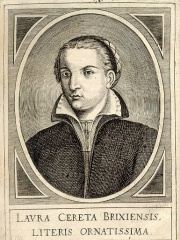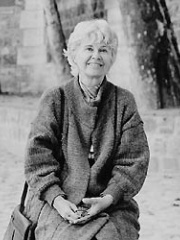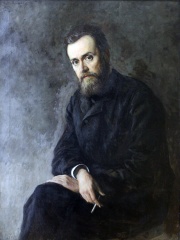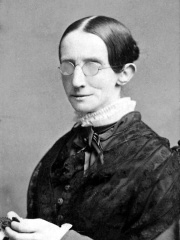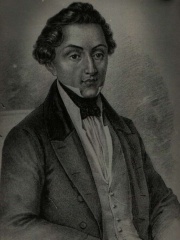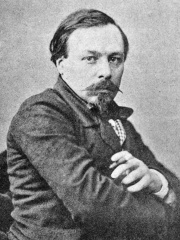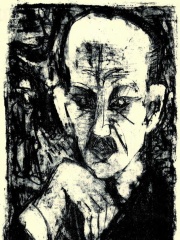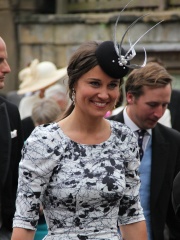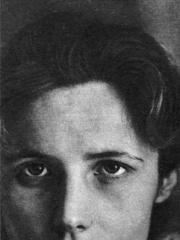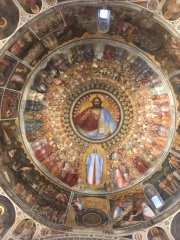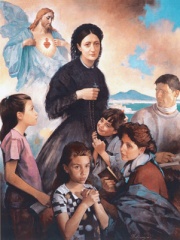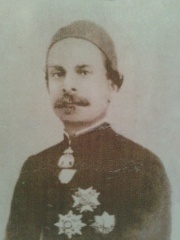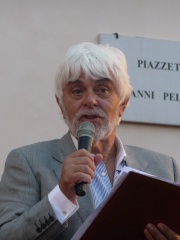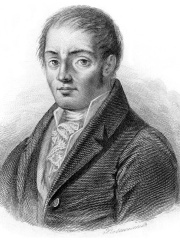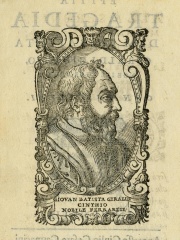WRITER
Nossis
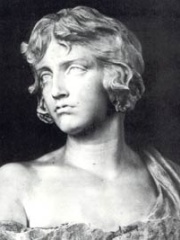
 Nossis
Nossis
Nossis (Ancient Greek: Νοσσίς, fl. c. 300 BC) was a Hellenistic poet from Epizephyrian Locris in Magna Graecia. Probably well-educated and from a noble family, Nossis was influenced by and claimed to rival Sappho. Eleven or twelve of her epigrams, mostly religious dedications and epitaphs, survive in the Greek Anthology. Her work is known for its focus on women, their lives and world; modern scholars such as Marilyn B. Skinner have argued that Nossis consciously positioned herself as part of a female literary tradition, in contrast to that of male poets such as Pindar. Read more on Wikipedia
Her biography is available in 20 different languages on Wikipedia. Nossis is the 4,082nd most popular writer (down from 3,312th in 2024), the 3,280th most popular biography from Italy (down from 2,885th in 2019) and the 226th most popular Italian Writer.
Memorability Metrics
Page views of Nossis by language
Among WRITERS
Among writers, Nossis ranks 4,082 out of 7,302. Before her are Laura Cereta, Anne Hébert, Gleb Uspensky, Laura Bridgman, Yuriy Venelin, and Léo Malet. After her are Mark Frost, Michel Carré, Carl Sternheim, Pippa Middleton, Agnieszka Osiecka, and David Allen.
Most Popular Writers in Wikipedia
Go to all RankingsLaura Cereta
1469 - 1499
HPI: 57.82
Rank: 4,076
Anne Hébert
1916 - 2000
HPI: 57.82
Rank: 4,077
Gleb Uspensky
1843 - 1902
HPI: 57.81
Rank: 4,078
Laura Bridgman
1829 - 1889
HPI: 57.81
Rank: 4,079
Yuriy Venelin
1802 - 1839
HPI: 57.81
Rank: 4,080
Léo Malet
1909 - 1996
HPI: 57.81
Rank: 4,081
Nossis
HPI: 57.80
Rank: 4,082
Mark Frost
1953 - Present
HPI: 57.80
Rank: 4,083
Michel Carré
1821 - 1872
HPI: 57.80
Rank: 4,084
Carl Sternheim
1878 - 1942
HPI: 57.79
Rank: 4,085
Pippa Middleton
1983 - Present
HPI: 57.79
Rank: 4,086
Agnieszka Osiecka
1936 - 1997
HPI: 57.79
Rank: 4,087
David Allen
1945 - Present
HPI: 57.78
Rank: 4,088
In Italy
Among people born in Italy, Nossis ranks 3,281 out of 5,161. Before her are Luca Badoer (1971), Gianni Amelio (1945), Nichi Vendola (1958), Joe Profaci (1897), Publius Sulpicius Rufus (-124), and Giusto de' Menabuoi (1330). After her are Riccardo Cucciolla (1924), Giuseppe Signori (1968), Caterina Volpicelli (1839), Eleonora Brown (1948), Guaimar IV of Salerno (1013), and Carlo Orlandi (1910).
Others born in Italy
Go to all RankingsLuca Badoer
RACING DRIVER
1971 - Present
HPI: 57.81
Rank: 3,275
Gianni Amelio
FILM DIRECTOR
1945 - Present
HPI: 57.81
Rank: 3,276
Nichi Vendola
POLITICIAN
1958 - Present
HPI: 57.81
Rank: 3,277
Joe Profaci
MAFIOSO
1897 - 1962
HPI: 57.81
Rank: 3,278
Publius Sulpicius Rufus
POLITICIAN
124 BC - 88 BC
HPI: 57.81
Rank: 3,279
Giusto de' Menabuoi
PAINTER
1330 - 1390
HPI: 57.80
Rank: 3,280
Nossis
WRITER
HPI: 57.80
Rank: 3,281
Riccardo Cucciolla
ACTOR
1924 - 1999
HPI: 57.79
Rank: 3,282
Giuseppe Signori
SOCCER PLAYER
1968 - Present
HPI: 57.78
Rank: 3,283
Caterina Volpicelli
RELIGIOUS FIGURE
1839 - 1894
HPI: 57.77
Rank: 3,284
Eleonora Brown
ACTOR
1948 - Present
HPI: 57.77
Rank: 3,285
Guaimar IV of Salerno
POLITICIAN
1013 - 1052
HPI: 57.76
Rank: 3,286
Carlo Orlandi
BOXER
1910 - 1983
HPI: 57.76
Rank: 3,287
Among WRITERS In Italy
Among writers born in Italy, Nossis ranks 226. Before her are Girolamo de Rada (1814), Leonidas of Tarentum (-320), Valerio Massimo Manfredi (1942), Ugo Betti (1892), Luciano De Crescenzo (1928), and Laura Cereta (1469). After her are Vasco Pratolini (1913), Julia Balbilla (72), Francesco Mario Pagano (1748), Vincenzo Cerami (1940), Giovanni Battista Giraldi (1504), and Elisabetta Dami (1958).
Girolamo de Rada
1814 - 1903
HPI: 58.18
Rank: 220
Leonidas of Tarentum
320 BC - 260 BC
HPI: 58.13
Rank: 221
Valerio Massimo Manfredi
1942 - Present
HPI: 58.13
Rank: 222
Ugo Betti
1892 - 1953
HPI: 58.06
Rank: 223
Luciano De Crescenzo
1928 - 2019
HPI: 58.01
Rank: 224
Laura Cereta
1469 - 1499
HPI: 57.82
Rank: 225
Nossis
HPI: 57.80
Rank: 226
Vasco Pratolini
1913 - 1991
HPI: 57.67
Rank: 227
Julia Balbilla
72 - 130
HPI: 57.61
Rank: 228
Francesco Mario Pagano
1748 - 1799
HPI: 57.56
Rank: 229
Vincenzo Cerami
1940 - 2013
HPI: 57.53
Rank: 230
Giovanni Battista Giraldi
1504 - 1574
HPI: 57.31
Rank: 231
Elisabetta Dami
1958 - Present
HPI: 57.25
Rank: 232
